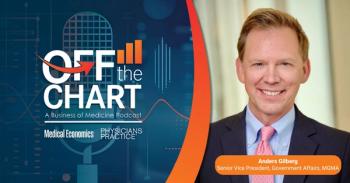
Coronavirus threatens medical practice solvency
Risks practice leaders need to manage immediately.
The coronavirus threatens both life and capital. We examine COVID-19 related business and legal risks that medical practice leaders must manage immediately.
SPECIFIC RISKS PRACTICE LEADERS SHOULD CONSIDER TODAY
1. Loss of labor force. Whether due to actual illness, quarantine or simply fear of exposure, how will your practice operate if you lose a significant portion of your specialized labor force for any extended period of time? There are also external threats, like the possibility of school closures, as several governors have declared a state of emergency. Many Americans live paycheck to paycheck and already struggle with healthcare and childcare costs. If the children of the American healthcare workforce aren’t in school, there are not enough affordable day care options, grandparents, friends and other options to care for them. That means some of your workforce will have to stay home to care for their children, affecting both their income and solvency and yours.
Trending:
2. Loss of Keypersons. In addition to the effects on labor, consider the effect of the long-term illness or death of key personnel including providers, staff and medical practice admin, owners and executives. Many practice owners have no succession plans and lack business basics like funded
3. Loss of revenue. This may be general to all businesses, including medical practices. Practices most at risk are those offering any elective or delayable treatment losing patients because of the public wanting to avoid exposure. Americans are already avoiding public spaces and common carriers like air travel and it would naturally affect physical facilities perceived as high-risk healthcare facilities themselves. As one specific example the
4. Loss of Attraction. Worse, in addition to the risk above, if an exposure is linked to a specific location, like your facility, the negative publicity and the idea that a physical location is “infected” could be devastating if not financially fatal. Practice owners need to think about health protocols now, and have plans to keep their patients, staff and facilities as safe and sterile as possible and to avoid reputational damage. This means having enforced and monitored policies and procedures on issues including, but certainly not limited to, cleaning, handwashing, physical contact, and a (labor law compliant) policy for monitoring and
Read More:
5. Insurance gaps. A number of potentially insurable risks that need to be considered with the help of an experienced commercial insurance agent NOW, while you may still be able do so.
- Business Interruption Insurance
- Personal disability insurance
- Key Man insurance to protect your business against loss of an executive
- Workers comp coverage for employees
affected on the job
- All three kinds of disability insurance; personal, business overhead and keyperson
- General liability insurance for any negligence
- Directors and Officers insurance to personally protect practice owners and executives from claims related to their managerial malpractice on any of these issues
6. Cashflow and solvency risks. Be wary of cashflow, discretionary spending and debt service obligations. Some of the most successful physicians in the country were wiped out during the last recession because they simply couldn’t meet their fixed business and personal overhead commitments. This may mean getting lines of credit in place, adjusting spending, owner draws and compensation, adjusting budgets and freeing up cash reserves and liquidity for both emergencies and opportunities. In a crisis, cash is always king.
As with all other risks and asset protection strategies out there, they are only predictable and cost effective if implemented in advance of a crisis, not as heroic triage after a crisis hits you. Stay safe out there, we will continue to follow the legal and business issues as they evolve.
Newsletter
Optimize your practice with the Physicians Practice newsletter, offering management pearls, leadership tips, and business strategies tailored for practice administrators and physicians of any specialty.









